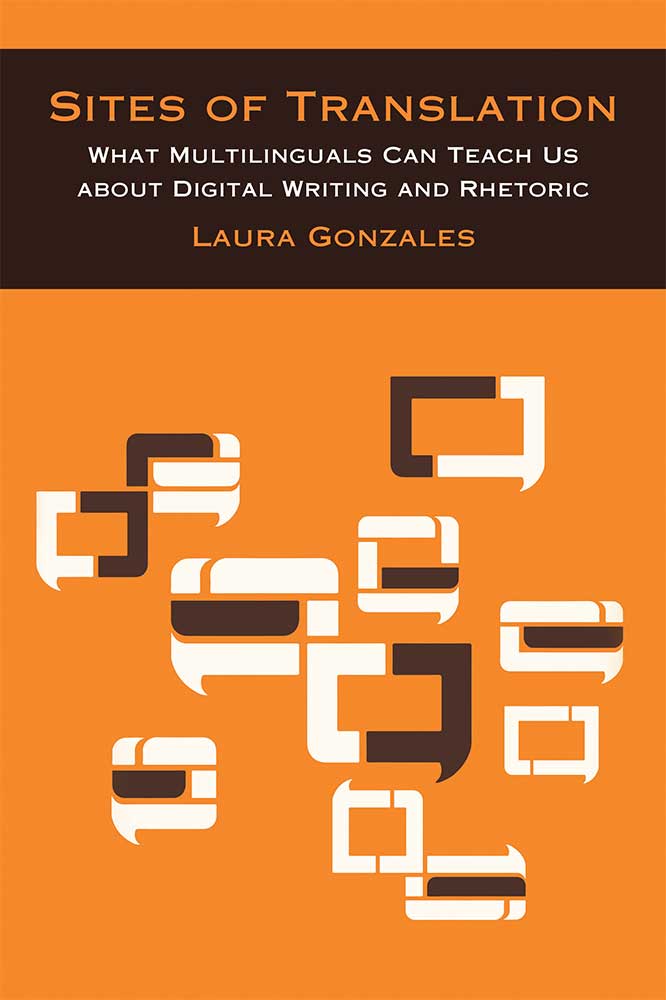Access or purchase here.
Book Cover for Sites of Translation: What Multilinguals Can Teach Us About Digital Writing and Rhetoric. Winner of the 2020 Conference on College Composition and Communication Advancement of Knowledge Award and the 2016 Sweetland Digital Rhetoric Collaborative Book Prize.
My research intersects culturally-situated approaches to technical communication and rhetoric with empirical research methods and community-driven methodologies. For example, my award-winning monograph, Sites of Translation: What Multilinguals Can Teach us about Digital Writing and Rhetoric (University of Michigan Press, 2018) is both a digitally-born webtext and a print book that speaks directly to conversations about language diversity and technology design in rhetoric and composition as well as technical communication. Working with 44 translators at two different research sites (a news broadcasting organization in Florida and a non-profit translations office in Michigan), I illustrate how multilingual communicators layer a variety of cultural, rhetorical, and technical strategies to provide access to information for Spanish-speaking communities in the United States. These strategies include deconstructing and repurposing language to meet the needs of specific audiences in particular contexts, using storytelling and gesturing to localize information for specific users, as well as using a wide range of digital translation tools as sites of invention to use, adapt, and even create words that adequately transform ideas from one language to another. In this project, I use screencast data, over 400 hours of video footage, and artifact-based interviews to illustrate the role that language accessibility plays in public participation and community sustainability.
In addition to my monograph, I have published over 20 peer-reviewed articles, webtexts, and book chapters that reflect my commitment to culturally-sustaining and collaborative interdisciplinary research and digital making. My work has been featured in leading journals such as Technical Communication Quarterly, College Composition and Communication, The Journal of Usability Studies, Connexions International Professional Communication Journal, Technical Communication, and Kairos: A Journal of Rhetoric, Technology, and Pedagogy, among others. Most recently, I am making more purposeful connections between language accessibility and disability studies in the context of digital media. For example, my recent article in the December 2018 issue of Communication Design Quarterly, “Captioning for Intersectional Accessibility: An Ethnographic Case Study of Multilingual Technical Content Creation,” threads conversations about interdependent research methodologies through a disability studies perspective (e.g., Price & Kerchbaum, 2016) with Kimberlé Crenshaw’s (1989) use of intersectionality to suggest that the designers and developers of digital media should more intricately engage with cultural rhetorics theories and methodologies to create intersectionally-accessible content that will reflect the diverse communicative strengths of contemporary audiences. Stemming from this work, I am also working on a second monograph that threads theories of translation and raciolinguistics with technology design, proposing what I call “multilingual user experience” as an orientation to digital composing that centers racial and linguistic difference as assets that can productively influence the creativity and impact of accessible digital technologies.
